May 17, 2016
Today was the day I’ve been waiting for since arriving in Adelaide (and Australia for that matter). We were going to the Cleland Wildlife Park to see and interact with koalas, kangaroos, wallabies and more. We waited for a sunny weekday so it wouldn’t be so crowded in the park. Cleland is about 30 minutes out of the city and in the Adelaide Hills. Robin had the day off so he came along and drove us there.

Cleland Park is massive, and unlike a zoo, the animals aren’t in small cages but are in enclosed large open areas that are separated by doors that visitors can roams through as they please. So basically it’s like a huge park where you can see all the animals roam around and interact with them. Admission is $22 AUD per person and we bought two bags of food ($3 AUD each) so we could feed the animals around the park. The small bag of food is a vegetable pellet mix.
The first animals we saw scurrying around were called potoroos. They are kangaroo-like marsupials the size of a rabbit and have long thick tails. These guys are all over the park and are fairly friendly. They came up to our feet a few times in hopes we would have food for them. They are basically like squirrels back home.
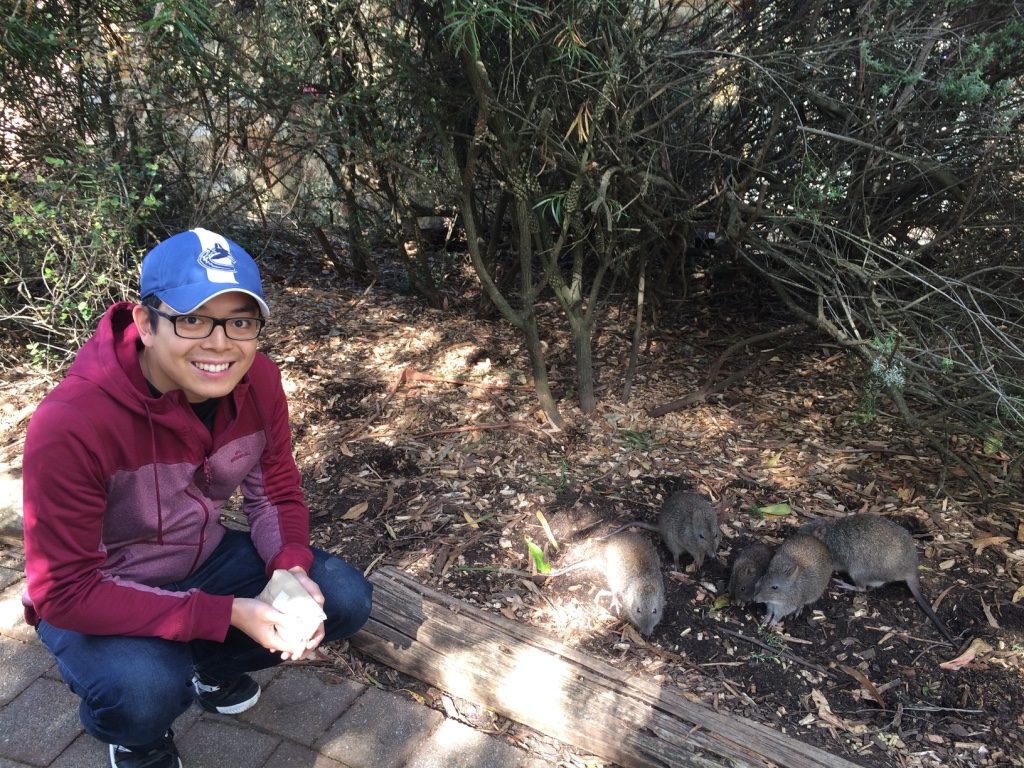
We went straight to the koala close up area, where you can come close to a koala, pet it, and take a picture. You can also hold a koala for $30 AUD. It would have been cool to hold a koala but I didn’t want to pay $30 AUD to do it. In the koala close up, we met a 16 year old koala named Ash. When I first saw her, she was a pretty good looking koala – clean, big and fluffy. Many koalas I’ve seen before in zoos in other parts of the world are a lot smaller and do not look as well taken care of. I later learned that South Australian koalas are a lot bigger than koalas in other parts of Australia. Since the park wasn’t busy, we were able to take our time with Ash and her handlers.
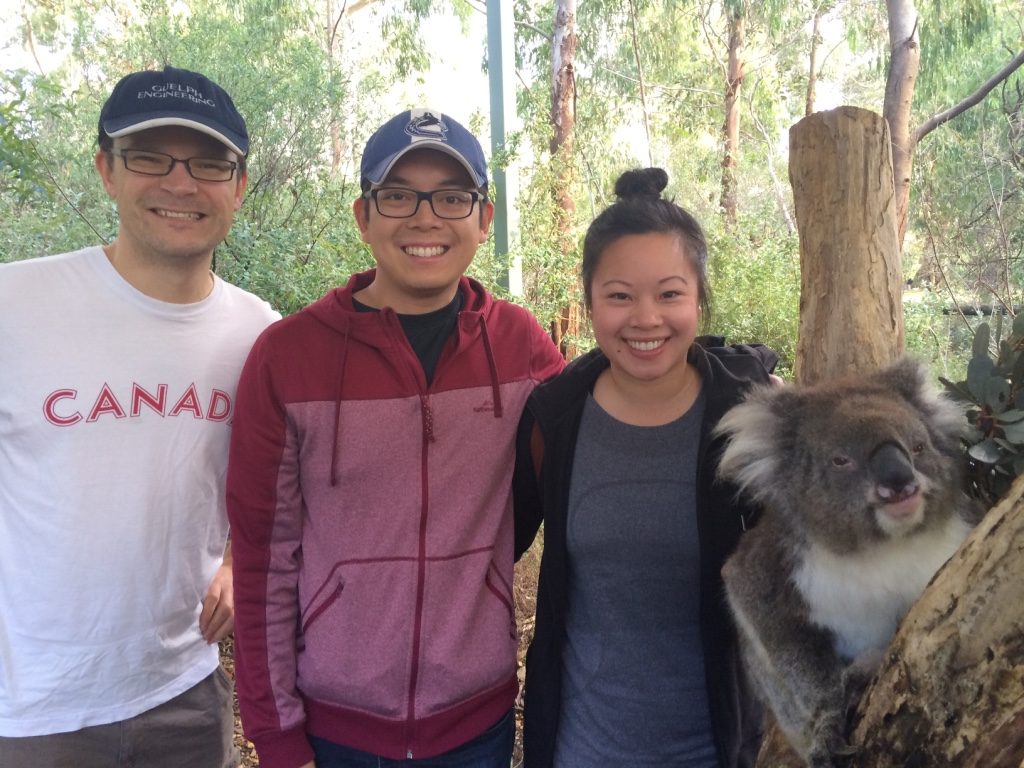
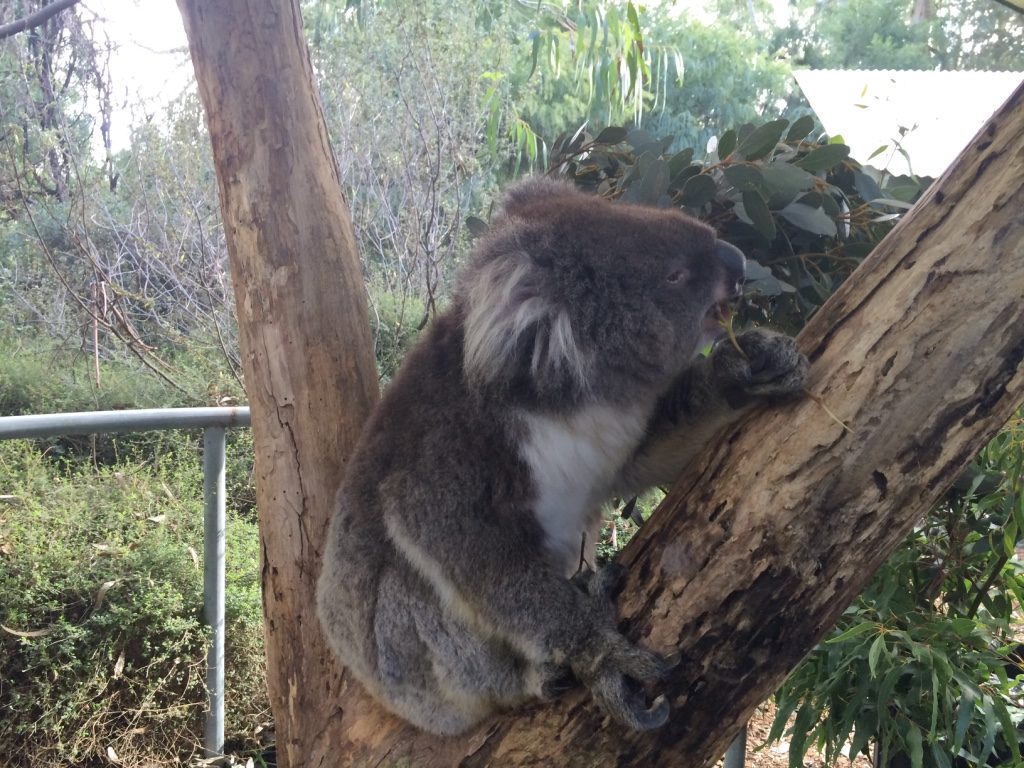
After our visit with Ash, we went over to where the other koalas were hanging out. The koala keepers were bringing in fresh eucalyptus branches for them to eat. It was entertaining to watch them because as soon as the koalas saw the fresh branches they all sat up and started moving to where the keepers would place the new ones. It’s funny though because the “old” branches that were there weren’t even old looking, but I guess koalas prefer super fresh leaves to munch on. There was even one koala that jumped out of his tree on to the ground to follow one of the handlers and wanted to be picked up (we later learned his name is Nicholas and he fancies one of the volunteers). These koalas are all rescues and cannot be put back into the wild because they don’t have the essential survival skills.

The next area we went to visit was where the kangaroos were. There were different types of kangaroos and they were all in separate park areas. There were red kangaroos (the large ones that are fairly common, more of a beige colour), western grey kangaroos (smaller and fluffier), and Kangaroo Island kangaroos (which are dark grey). The majority of the red kangaroos were just resting and lying down. Kangaroos are most active during dusk, which is why so many of them get into trouble while hopping around highways in Australia.

We found a few western grey kangaroos to feed. At first I didn’t know how close I should be to the kangaroos since you never know with wild animals but I quickly learned that the kangaroos here are extremely used to humans and are very gentle and friendly. It was a very different experience from feeding deer in Nara! There is a kangaroo “rest area” which is roped off to visitors and it was where the majority of the kangaroos were just lying around. We didn’t see the signs saying it was a rest area, which also meant do not feed them. Some of the kangaroos did come out of the area when they saw humans around if they wanted something to eat. Tim enticed one to come out to the open grass for some food.
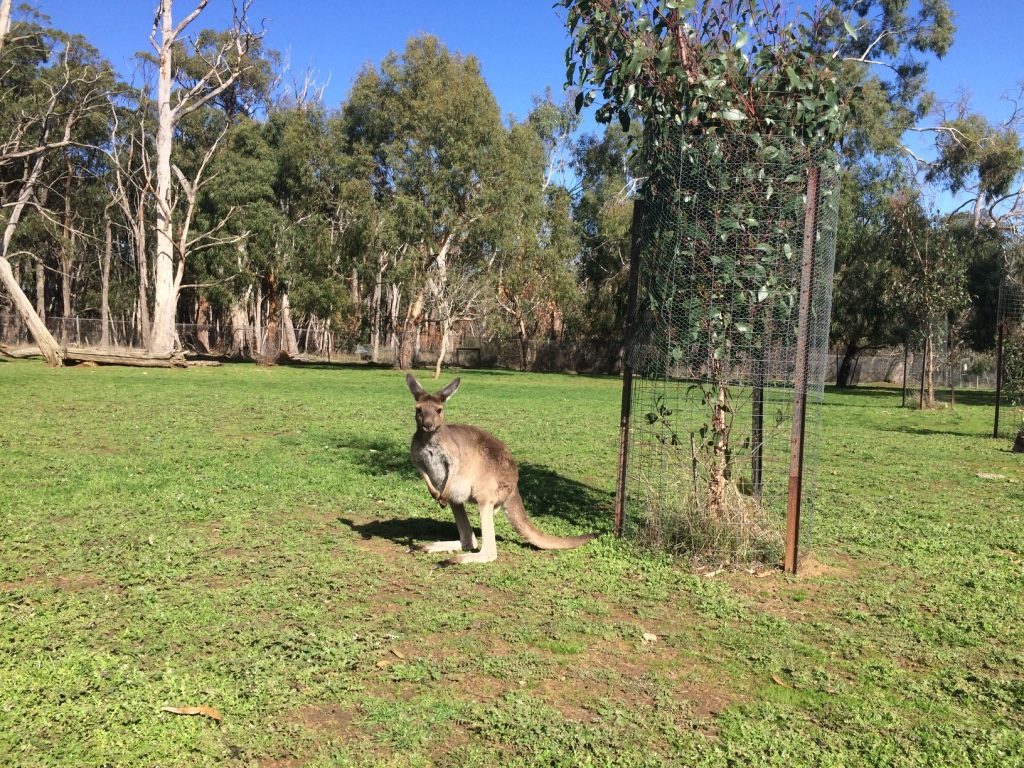
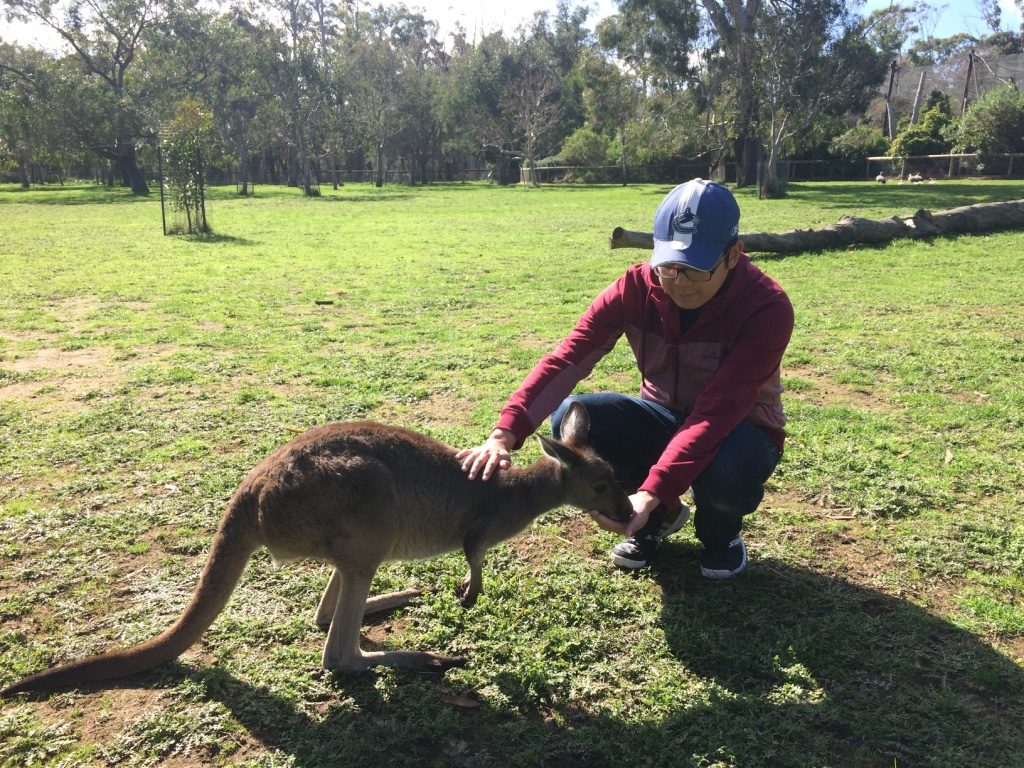
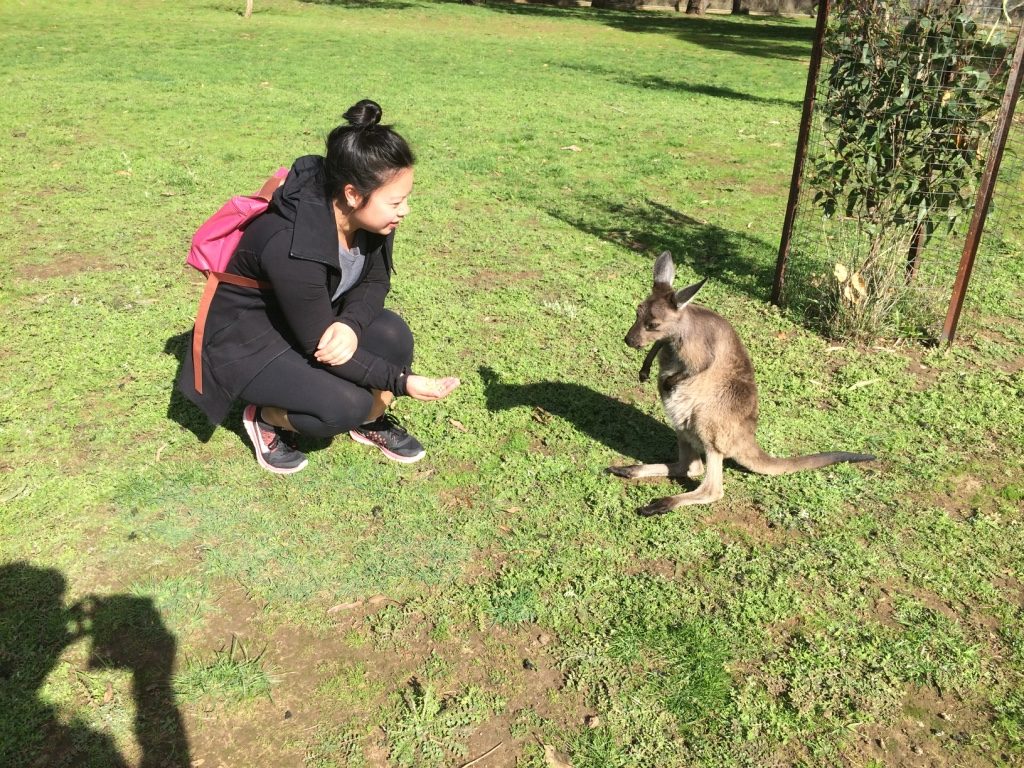

The kangaroo that came out of the roped off area towards us was a pregnant mama kangaroo. We saw that her pouch was full and at some points it was moving around quite a bit. We agreed that we should give her more food since she was eating for two. She stayed with us for a while munching on the veggie pellets. Then suddenly the pouch was moving around a lot and we saw a little head poke out. It was a joey! This was so awesome to be able to see a joey in its mother’s pouch still. He looked really young and a little like a puppy. He would pop his head in and out as he pleased for the rest of the time we were feeding his Mom. It’s one thing to be able to see kangaroos from afar but it was quite surreal to be interacting with one. After about 20 minutes, the Mom had enough food and hopped away to get some water.



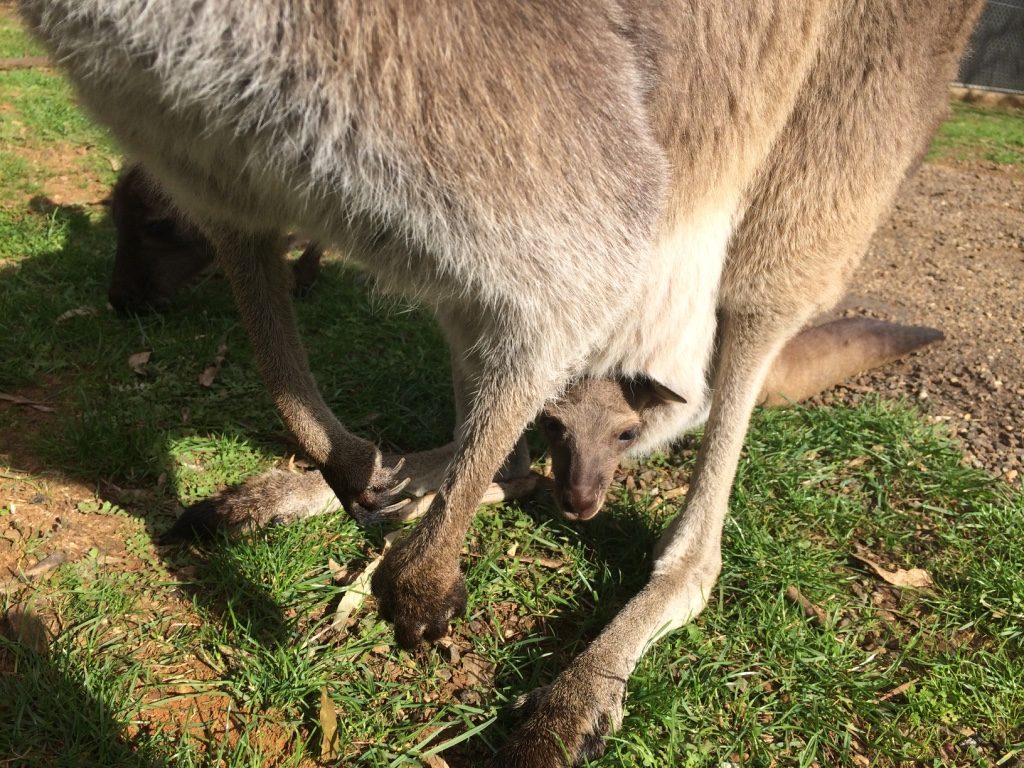
The Kangaroo Island kangaroos seemed a bit more scared of humans compared to the western greys. Tim approached a larger kangaroo to feed it. He showed him the food and the kangaroo came and took a few bites. Tim tripped over his own feet as he was trying to get more comfortable and it startled the kangaroo and it hopped away pretty quickly. We found two smaller kangaroos around this part of the park that were interested in food. They were very sweet and sometimes they would put their paws on our hands to block the other kangaroo from getting any food. There were also a lot of ducks around that were just around for the leftovers that fell on the ground. Ducks aren’t featured at the park but it seems like a large population of ducks come to Cleland because they can just be scavengers there.


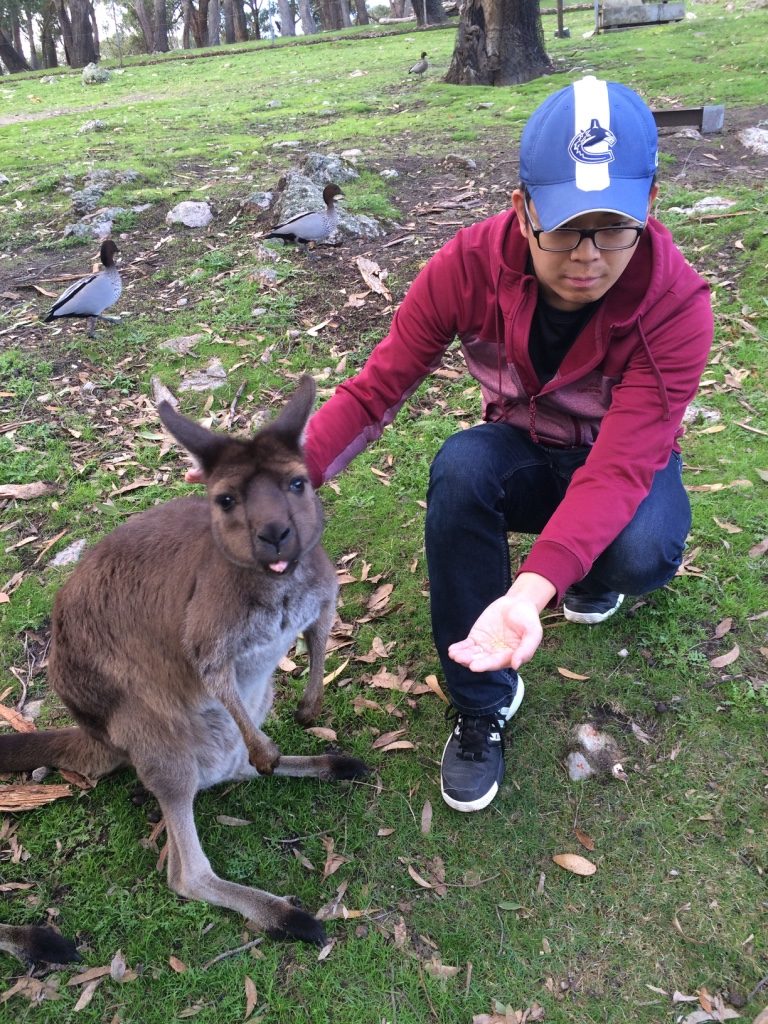
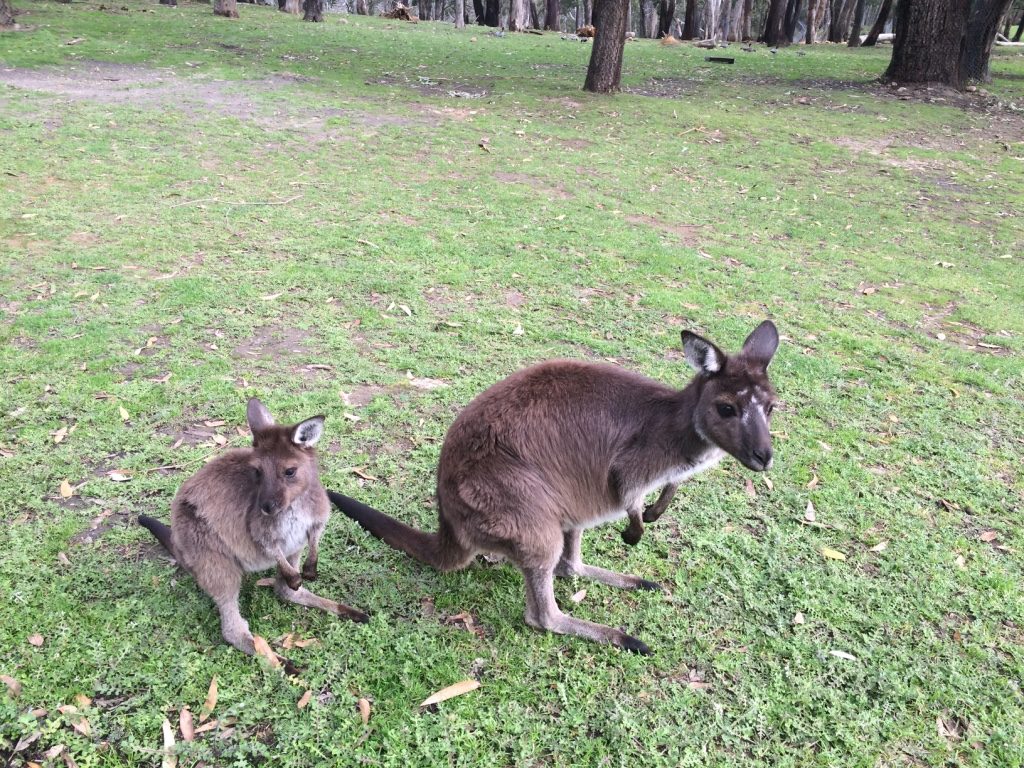
Before coming to Australia, I didn’t know what a wallaby was. We saw so many of them and they’re so cute. They’re just like mini fluffy kangaroos. We fed a few of them and found a very young one in the bushes around the walkways that was just hanging out. We offered it food and it came up to us and ate. It got really scared when two potoroos ran across the bush near it… it jumped back really quickly. I have a pretty cool video of that happening. By the end of the day, I had taken 500 pictures and 30 videos.

Along with Australia’s unique animals, they have vastly different birds. There were quite a few aviaries where we could see more unique birds flying around. There was also a large pond area that had huge pelicans hanging out along with ibises (garbage birds) and geese. I’ve never seen a pelican like that before. They definitely could eat as many fish as they like.

Some other animals that were in enclosed areas that you couldn’t walk through (for good reason) were dingos. Dingos are mainly found in the outback and in Western Australia. They are slowly becoming extinct as many of them are mixing with domestic dogs and there are not as many pure bred Dingos left in Australia. We learned that Dingos are Australia’s apex land predator because they can actually kill kangaroos. When we passed by the dingo area, we were just in time for a feeding. Dingos are actually very good looking dogs, you almost forget they are wild. The Dingo keeper was feeding them chickens with the feathers still on. The dingos that were being fed were three brothers that the park got in November. There is a dominate brother who basically ate all the chicken and a very submissive brother who just kept hiding behind the handlers and if he touched a piece of chicken, the older brother would growl and bark at him. The growl and bark was very loud and aggressive sounding. The third brother took his chicken as soon as it hit the ground and ran away to eat it peacefully.

The Tasmanian Devil was very cute. It kind of hid from us when we came by his area. The Tasmanian Devils are becoming endangered and have been prone to developing a facial type of cancer which is killing off a lot of them right now.

After spending about 4 hours at the park, we headed out. We started and ended with a koala close up and got to meet another koala. It was a really fun day and was definitely the highlight of Australia so far (for me). Tim had been to Cleland before and he never hyped it up to me so I wasn’t prepared for how awesome it would be. He told me after that he knew it was going to be amazing for me but wanted me to see for myself. I’m happy we waited for Cleland and didn’t just see all these animals in one of Australia’s many zoos.
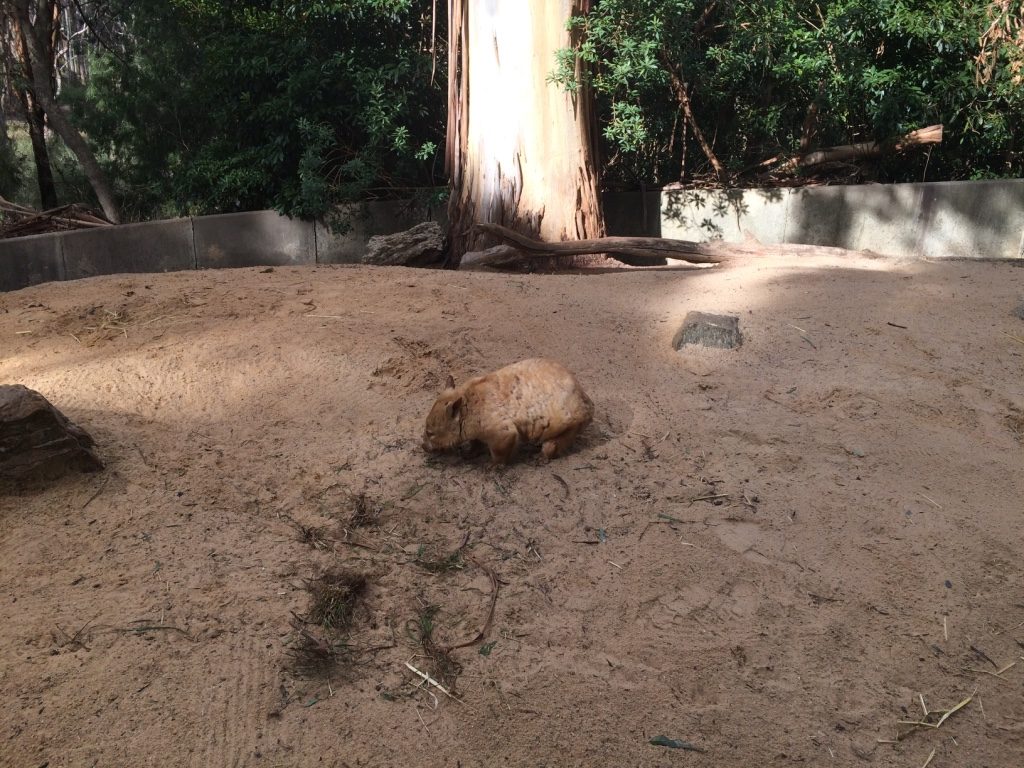
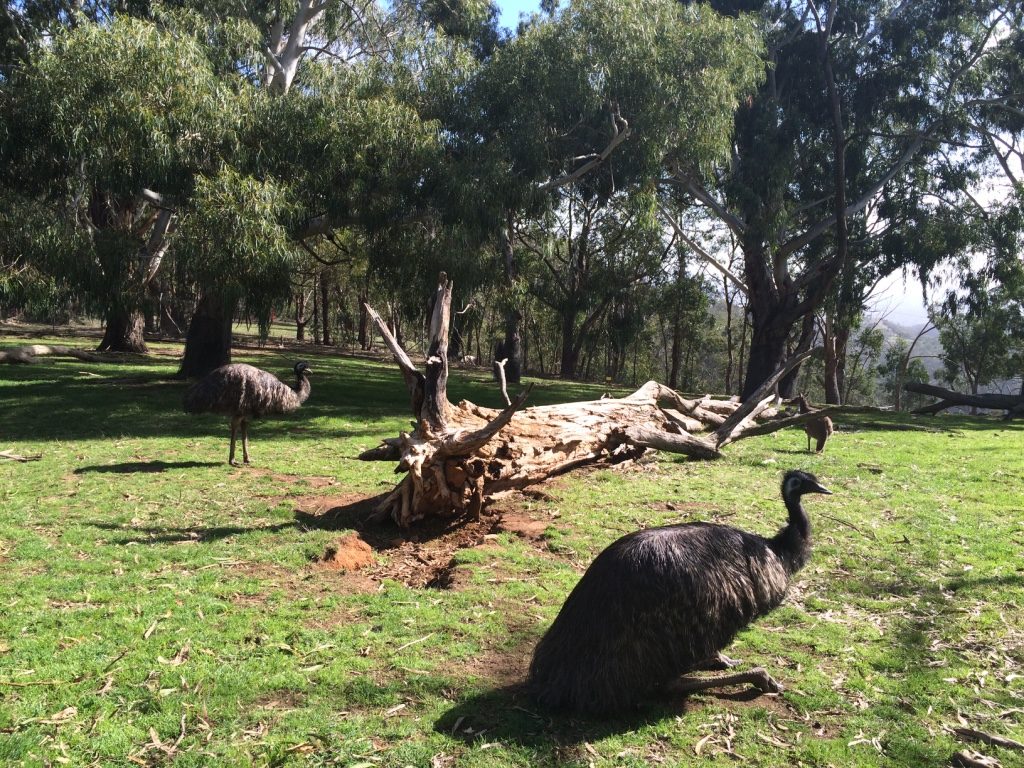

Cleland is close to the summit of Mount Lofty – which has a view point of Adelaide. Most people hike up to the summit but since we were at the summit already we just drove into the parking lot to take a look. Unfortunately, the sky was very hazy so we couldn’t see much of the city from there. You could barely make out the outline of the skyline. Apparently there were some fires a couple of weeks ago so that’s probably why it was hazy.

Also in Adelaide Hills, there is a town called Hahndorf, Australia’s oldest German settlement. The main street in Hahndorf is really quaint and very charming. The architecture and feel of the streets does feel like you’re in Germany or Germany at Epcot. We had a pretty late lunch at the German Arms pub where we shared a burger and Bavarian meat platter. Everything was really good, I especially liked the roasted pork and crackling. We walked to a leather smith shop and looked around. The majority of stores and cafes in Hahndorf close at 5pm so as we were walking around after our late lunch all the stores were closing. If we’re ever in Adelaide again, I would want to spend a bit more time here when stores are open and it’s a bit more lively.



We headed back to the townhouse to meet Jess for dinner. Tim and I both fell asleep during the ride back and when we got back to the townhouse we all rested up. Jess and Robin made reservations for dinner later in the evening at a restaurant downtown called Red Ochre. It’s a restaurant that specializes in Australian and Native cooking and serve a lot of Australian specific meats – like kangaroo, emu, crocodile. It wasn’t ideal that we would be playing with kangaroos during the day and then eating them for dinner.

The restaurant is situated on the Torrens River and we were seated at a table with a view of the river and part of downtown. Since our dinner was at 7:30pm, it was already dark out so we could just see some of the buildings lit up in the distance. We ordered a platter that had kangaroo steaks, lamb, crocodile ribs, emu and pork sausage, and fried barramundi. This was a good way to sample all the different types of Australian meats. Unfortunately, my favourite meat was the kangaroo. They cooked it really well. It was extremely tender for a meat that is typically very tough. I actually felt a bit bad eating meat for the first time. We ordered our meat medium rare and when I ate the kangaroo, I even flipped it over so I didn’t see the meat juice. I probably won’t be eating any more kangaroo meat on this trip.
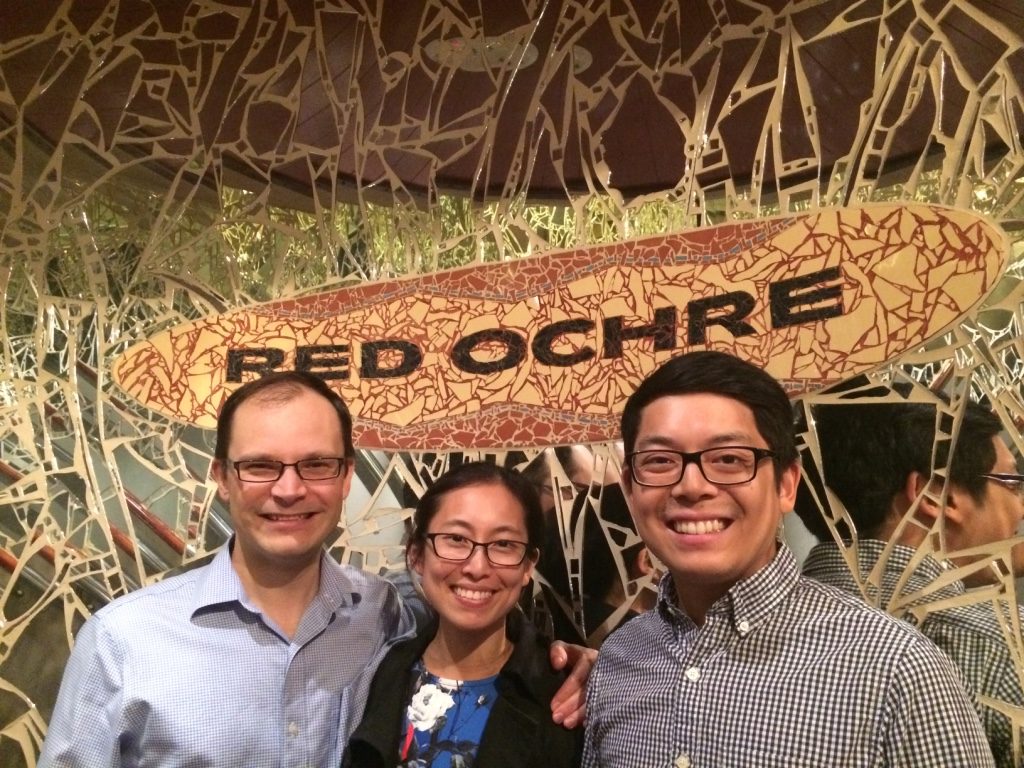
After dinner, we headed back to the townhouse, made tea and played some more of the games we brought. Tomorrow is going to be our last day in Adelaide before heading up north to Cairns and the Great Barrier Reef.
Steps today: 12,000

